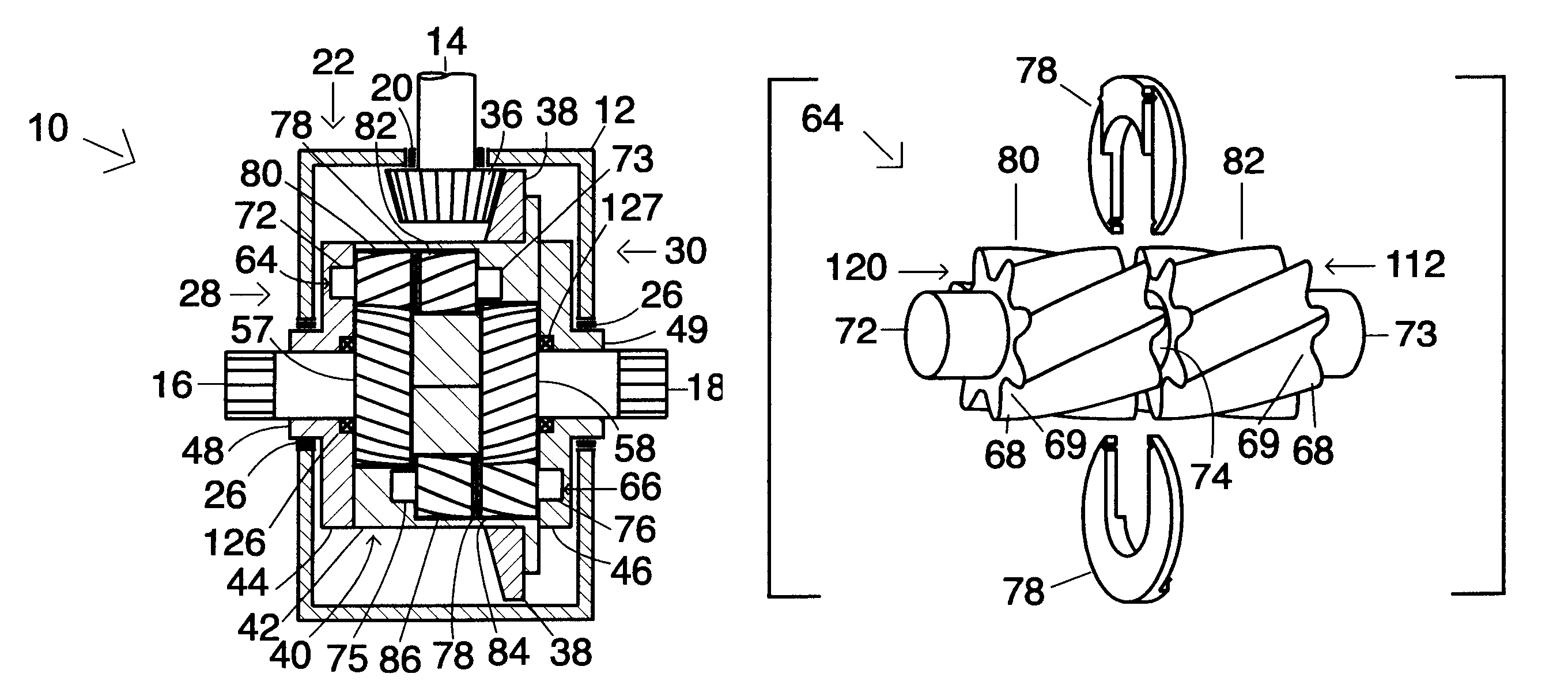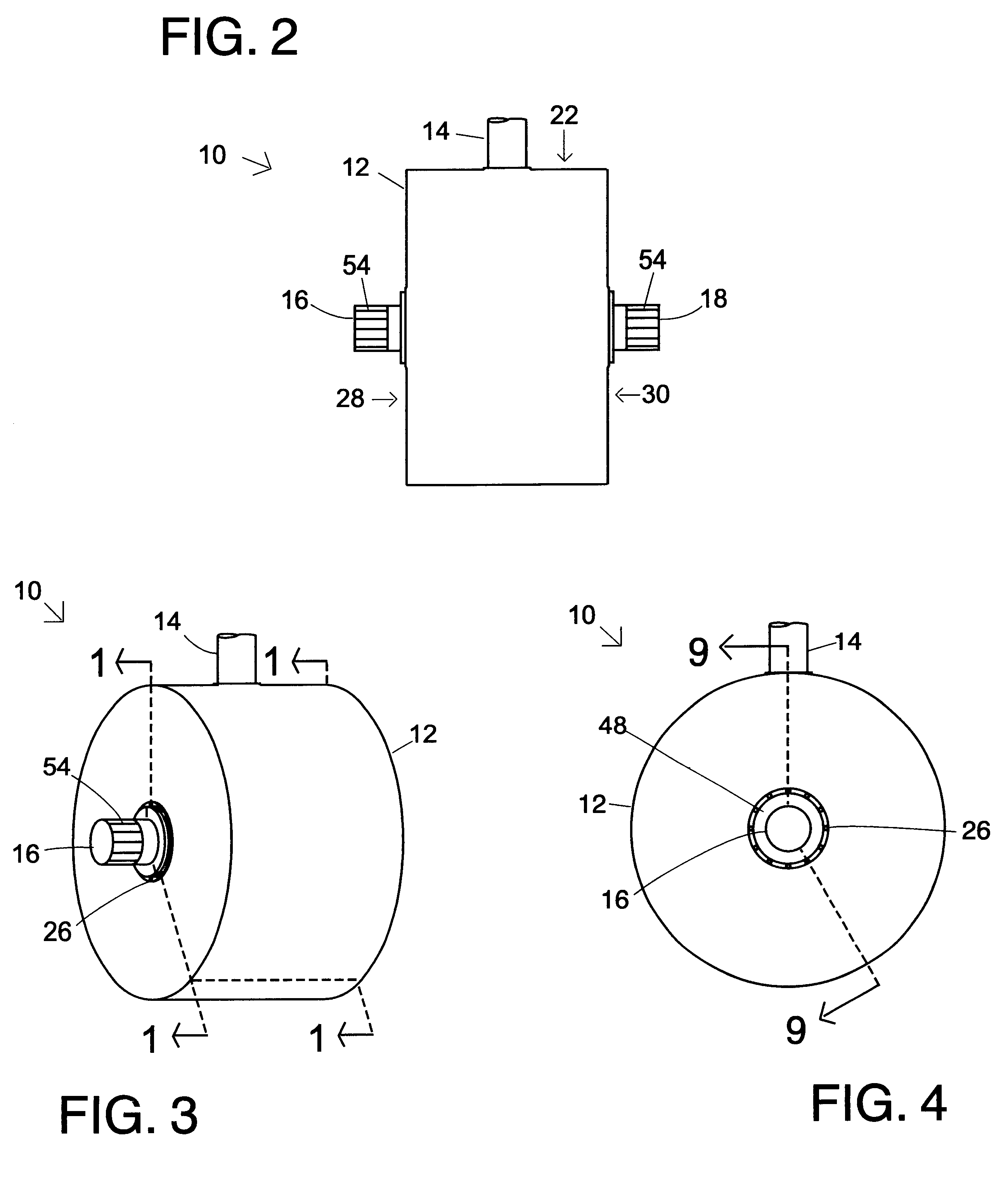Limited slip differential
a technology of differentials and limited slips, applied in the field of differentials, can solve the problems of increasing the risk of a motor vehicle having such a differential of becoming immobilized on substantially slippery surfaces, wheel hops and/or axle breaks, and the outer wheel rotating faster than the inner wheel
- Summary
- Abstract
- Description
- Claims
- Application Information
AI Technical Summary
Problems solved by technology
Method used
Image
Examples
Embodiment Construction
An alternative embodiment of a pinion 210 is shown in FIG. 19, which is substantially the same as the pinion 64 having the partitions 78, shown in FIGS. 11A, 11B, 12A, and 12B, except that the pinion 210 has a central hole 212 to accommodate a separate pinion shaft 214.
Another alternative embodiment of a pinion 216 is shown in FIG. 20, also having a separate shaft 218 and external splines 220 affixed thereto. The pinion 216 has a one-piece partition 222 and two separate substantially the same pinion sub units 224. Each pinion sub unit 224 has a central hole 226 and internal splines 228 affixed therethrough each of the pinion sub units 224. The internal splines 228 therethrough the pinion sub units 224 mate and interlock with the external splines 220 of the shaft 218.
An alternative embodiment of the limited slip differential 229 which is substantially the same as the limited slip differential 10 shown in FIGS. 1-20 is shown in FIG. 21, except that the limited slip differential 10 has...
PUM
 Login to View More
Login to View More Abstract
Description
Claims
Application Information
 Login to View More
Login to View More - R&D
- Intellectual Property
- Life Sciences
- Materials
- Tech Scout
- Unparalleled Data Quality
- Higher Quality Content
- 60% Fewer Hallucinations
Browse by: Latest US Patents, China's latest patents, Technical Efficacy Thesaurus, Application Domain, Technology Topic, Popular Technical Reports.
© 2025 PatSnap. All rights reserved.Legal|Privacy policy|Modern Slavery Act Transparency Statement|Sitemap|About US| Contact US: help@patsnap.com



